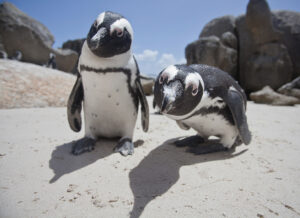Deep below the Pacific Ocean, in a vast expanse that covers 4.4 million square kilometers between Hawaii and Mexico, an unlikely community hustles and flows.
See-through sponges shaped like flower vases wriggle among bright red sea stars with legs as thin as pencils. There’s one gooey creature that looks like a cross between a caterpillar and a brontosaurus, with a humanoid hand for a head (see above). Sea spiders, urchins, and even gelatinous, colorful creatures with long tales called “gummy squirrels” all coexist in this abyssal place.

Psychropotes longicauda, a species of ‘gummy squirrel.’ Photo: SMARTEX Project/NERC
Scientists estimate that they discovered 5,000 previously unknown species here during a recent survey. It’s called the Clarion-Clipperton Zone — and it’s the target of an intensive deep-sea mining project.
Thousands of expeditions had visited the so-called CCZ before, but no one had previously compiled the results. With up to 17 mining contracts in the area approaching the review stage, an international team of scientists sprang into action, according to The Guardian.
The scientists published their findings in the journal Current Biology, and the results are mind-boggling: 5,578 different species, of which 88-92% were new to science.
“We share this planet with all this amazing biodiversity [of species], and we have a responsibility to understand it and protect it,” Muriel Rabone, the paper’s lead author and a deep-sea ecologist at the Natural History Museum (NHM), told The Guardian.

An urchin, as yet unnamed, found in the CCZ. Photo: SMARTEX/Natural History Museum/NOAA
Mining contracts loom
Rabone and his colleagues might have little time to establish protections for this deep-sea ecosystem.
The United Nations’ International Seabed Authority (ISA), which is “focused on the development of a regulatory regime for exploitation of [deep-sea mineral] resources,” will begin accepting applications to mine the CCZ in July.
High-priority targets for miners include cobalt, copper, nickel, and manganese, all of which are pivotal components in batteries. On the sea floor, they’re locked in potato-sized rocks called “polymetallic nodules,” usually at depths of 4-6 km.

Manganese nodules from the South Pacific. Photo: Wiki Commons
The CCZ holds an unusual concentration of them, and that’s not lost on the ISA.
“The most studied area of commercial interest is the CCZ. This single deposit contains more nickel, manganese, and cobalt than all terrestrial resources combined,” the ISA stated in 2017.
Companies from the U.S., U.K., and China populate the list of contractors seeking to extract the nodules from a 1.9-million-sq-km area. They’re apparently not that hard to get at, generally speaking. The UN claims that usually, they occur beneath a few centimeters of silt.
Then again, you can also pan for gold, but profits will suffer relative to heavy extraction methods.
The Metals Company offers a rough outline of its deep-sea mining techniques. It looks and sounds a lot like vacuuming. A “machine” sucks up the first layer of sediment, separates the nodules from the substrate, then releases the unwanted matter. Its FAQ section focuses mainly on carbon emissions, but does address deep-sea ecosystems: “The clean energy transition will require trade-offs.”

Abyssopathes cf lyra, part of the Cnidaria phylum. They capture prey with specialized cells. Photo: SMARTEX/Natural History Museum/NOAA
Preemptive action
The outlook for the gummy squirrel and its rare companions may be stark. But the industrial complex that threatens them is at least inviting in-house scientists.
Dr. Adrian Glover is a deep-sea biologist at the National History Museum and senior author of the recent survey. He’s been to the CCZ several times, according to The Guardian, most recently as part of an expedition backed by U.K. Seabed Resources, a deep-sea mining company that operates in the U.K.’s exploration area.
It’s “imperative that we work with the companies looking to mine these resources to ensure any such activity is done in a way that limits its impact upon the natural world,” Glover told The Guardian.

The star-shaped dytaster. Photo: SMARTEX/Natural History Museum/NOAA
Glover sidesteps any responsibility to kill or approve deep-sea mining projects. But he does see a benefit in scientific consultation before the proposed extraction begins.
“Everyone who lives on this planet should be concerned about using it in a sustainable way,” he said. “In some ways, I see it as very positive that we can come up with a regulatory structure before mining takes place. [In] other large industries, such as oil and gas, the regulations came later.”






